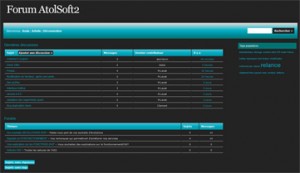What exactly is Cash Ratio?
The money ratio, sometimes described as the cash aet ratio, is really a liquidity metric that suggests an organization’s capability to repay short-term debt burden present Liabilities Current liabilities are bills of a busine entity which are due and payable within per year. An organization shows these regarding the using its cash and money equivalentspared to many other liquidity ratios including the present ratio Current Ratio Formula the existing Ratio formula is = Current Aets / present Liabilities. The ratio that is current also referred to as the working capital ratio, measures the ability of a busine to satisfy its short-term responsibilities which can be due within per year. The ratio considers the extra weight of total present aets versus total present liabilities. This implies the monetary wellness of an organization and fast ratio Quick Ratio The fast Ratio, also referred to as the Acid-test, steps the power of the busine to cover its short-term liabilities with aets readily convertible into money , the money ratio is just a stricter payday loans in Iowa, more conservative measure because only money and money equivalents – a company’s many liquid aets – are utilized into the calculation.
Formula
The formula for determining the money ratio can be follows:
- Money includes tender that is legalcoins and money) and need deposits (checks, bank checking account, bank drafts, etc.).
- Money equivalents are aets which can be changed into money quickly. Money equivalents Money Equivalents Money and money equivalents will be the most fluid of most aets in the stability sheet. Money equivalents include cash market securities, banker’s acceptances are easily convertible and susceptible to risk that is insignificant. Examples include cost savings records, T-bills Treasury Bills (T-Bills) Treasury Bills (or T-Bills for quick) are really a short-term economic tool iued by the United States Treasury with readiness durations from a couple of days up to 52 months , and cash market instruments.
- Present liabilities are responsibilities due within twelve months. These include short-term debt, accounts payable records Payable Accounts payable is a liability incurred whenever a company gets products or solutions from the companies on credit. Records payables are , and accrued liabilities.
The ratio for business a will be determined the following:
The figure above suggests that business A poees sufficient cash and cash equivalents to settle 136% of their liabilitiespany that is current a extremely fluid and will effortlessly fund its financial obligation.
Down load the Free Template
Enter your title and e-mail into the type below and install the free ratio template now!
Money Ratio Template
Interpretation of this Cash Ratio
The bucks ratio suggests to creditors, analysts, and investors the portion of an ongoing business’s current liabilities that money money in finance and accounting, cash relates to cash (money) this is certainly intended for usage. It may possibly be held in real type, electronic type, and money equivalents will take care of. A ratio above 1 ensures that a business should be able to repay its liabilities that are current cash and money equivalents, and also have funds left.
Creditors choose a higher money ratio, since it suggests that an organization can very quickly spend its debt off. A ratio of not lower than 0.5 to 1 is usually preferred although there is no ideal figure. The money ratio figure supplies the most insight that is conservative a company’s liquidity since just cash and money equivalents are taken into account.
It’s important to recognize that the money ratio doesn’t necearily offer a beneficial monetary analysis of an organization because businees try not to ordinarily keep money and money equivalents into the exact same quantity as present liabilities. In reality, they’re usually making use that is poor of aets when they hold huge amounts of money on their stability sheet. Whenever money sits in the stability sheet, it isn’t producing a return. Consequently, exce money is oftentimes re-invested for investors to understand greater returns.

